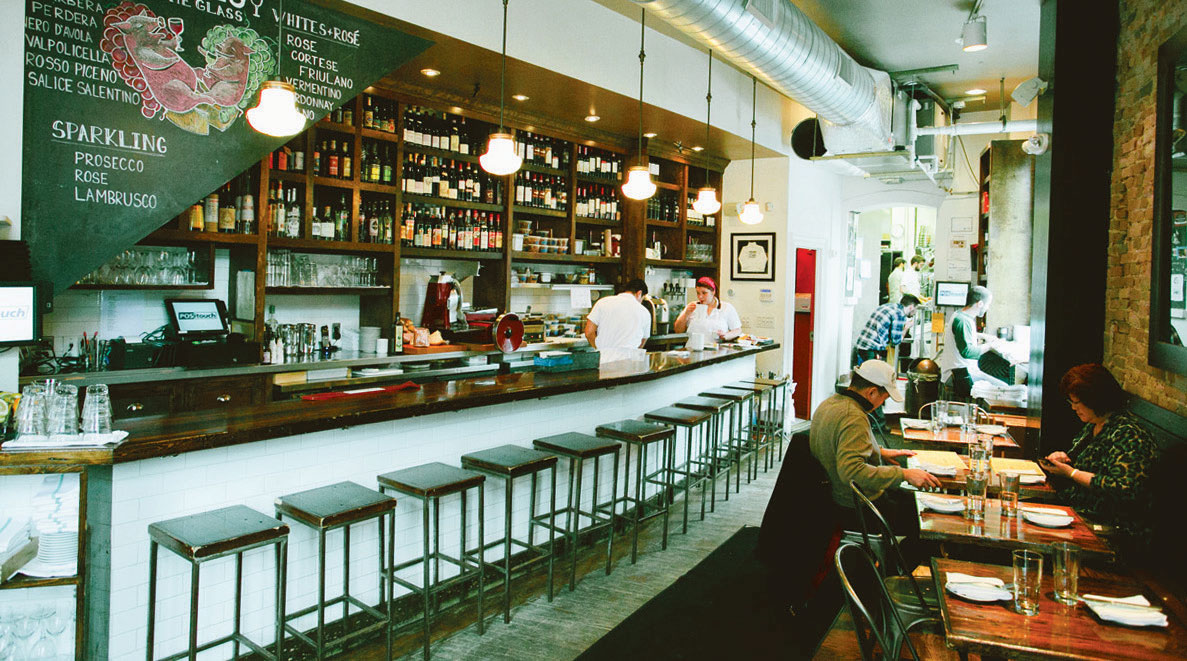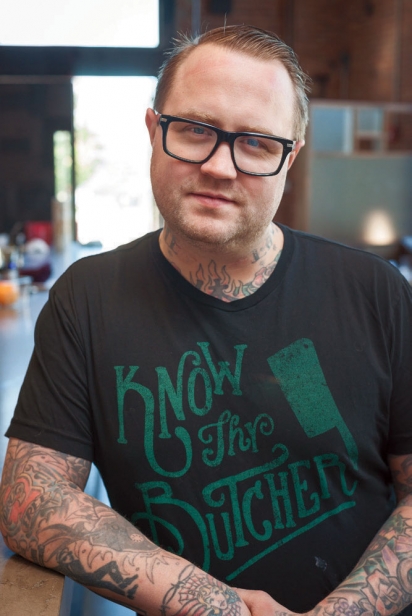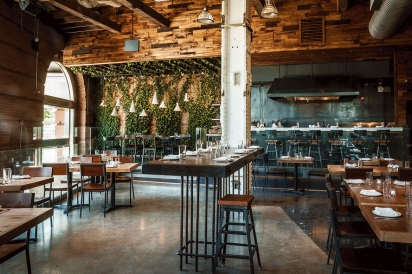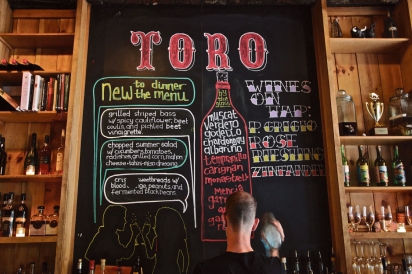Nose to Tail with Jamie Bissonnette
Jamie Bissonnette has in the last eight years become one of the best-known chefs in America, opening two award-winning restaurants in Boston and another in New York, publishing a critically acclaimed cookbook and gaining notoriety as one of the top nose-to-tail chefs in the country.
Bissonnette and partner Ken Oringer in 2005 opened Toro, a Barcelona-style tapas restaurant that serves traditional and modern Spanish-style small plates. In 2008, they opened Coppa, an intimate enoteca featuring Italian small plates with great wines and cocktails. Both are located in South Boston and are known for their locally sourced and sustainable ingredients.
Bissonnette’s first award came in 2007, when the Improper Bostonian named him “Rising Star Chef ” for his innovative and modern take on classic fare as the executive chef at KO Prime, a steakhouse. In 2009, StarChefs named Bissonnette a Rising Star Chef. That same year Coppa gained recognition as one of Boston’s top fares by both the Boston Globe and Esquire.
In 2011, Bissonnette became Food & Wine magazine’s first ever People’s Choice Best New Chef, and in 2014 he was named Best Chef: Northeast by the James Beard Foundation. He was the winner and is now a judge at Chocon 555 nose-to-tail competition, and known nationally for his exceptional charcuterie.
On a typical night, Bissonnette can be found in the kitchen of one and sometimes both Boston restaurants working with staff to execute the perfect meal, but on Saturday June 20 he will be in Aspen at the Food & Wine Classic heading up the Paella Party.
edibleASPEN: Your restaurants are known for working closely with local purveyors in the Boston area. What are the challenges and what are the advantages of bending over backward to highlight local ingredients?
Jamie Bissonnette: The challenge is winter: Not much grows from December to mid-April in New England. Our relationships with farmers in other regions help get us through.
The advantages are many. Some of our veggies can come to the restaurant and be served having never seen a refrigerator. The flavor is so great! Having the ability to walk to the market or farm stand and buy ingredients that are local is great, but having the growers and pickers come in to eat them, that’s a bigger reward. We are surrounded by amazing produce, seafood and heritage-breed animals. It’s wicked!
EA: Do you seek out humanely treated, locally raised meats as well? Are they more difficult to find in an urban setting like greater Boston?
JB: New England is lucky to have such a great community of people raising animals the right way. It was difficult years ago. Now the only problems are the options!
EA: In 2013, you and Ken Oringer opened Toro NYC. How is that restaurant different than Toro in Boston?
JB: Toro NYC is like the scene in the movie Wayne’s World when they walk onto the set, and Garth says “This looks like Wayne’s basement …” It’s the same and different in all the great ways. Toro NYC is the little brother to Boston, but that little brother is a linebacker. We have the same menu items, but we also have the space to flex in NYC and are able to run with more variety and a much larger menu.
EA: You won the Cochon 555 Nose-to-Tail competition and have since become a judge. Can you tell us about that event, and what you found to be the biggest challenge when you were competing?
JB: This event is rad. Founder Brady Lowe brings the awareness of heritage-breed pigs to the public. He’s teaching us all to realize that we risk losing the heritage breeds, if we do not educate the public.
It’s a massive pig party. The biggest challenge for me was that I wanted to make more, do more, but only had one pig to make 500 bites. And that I couldn’t try all the other competitors’ foods, because I only have one stomach!
EA: You’ve been a judge at the Cochon 555 and on Food Network’s show “Chopped.” What’s it like sitting on the other side of the table, judging your peers rather than being judged by them?
JB: I don’t like to think of it as judging my peers. I like giving feedback, and learning. The best part for me is the aha moment when I say, “Why didn’t I think of this?”
EA: Your first cookbook, The New Charcuterie Cookbook : Exceptional Cured Meats to Make and Serve at Home has been well received by the critics. But have you heard back from readers about their take?
JB: The positive comments are nice, but I don’t work in an industry where we focus on compliments. We look at how we can improve. The most constructive comments were about typos. I’m a terrible writer, and can’t spell for the life of me. It’s a miracle my editor had the patience to sift through my recipes.
EA: What’s your very favorite type of cured meat? What’s your least favorite?
JB: I love—love, love—Spanish ham and Italian coppa. But liverwurst is where my heart lies. I dislike monkfish liver torchon. I appreciate it when it’s done well, but it’s a flavor I have never really dug.
EA: Are you cooking up ideas for another book?
JB: Maybe. If I write another book, I already know what I’ll do differently.
EA: As you work and sometimes toil as a chef, what are the moments, those interactions, be they large or small, that you savor the most?
JB: The first time I cooked for someone else, I made toast with soft scrambled eggs and American cheese. The smiles on the faces of the kids eating it were my reward. It never gets old feeding someone, and watching them smile.







